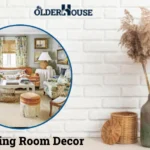Small Entryway Ideas: Maximizing Space with Smart Storage
The entryway is the first impression of your home, yet it often becomes a catch-all for shoes, bags, and other items. If you have a small entryway, maximizing space while maintaining style can be a challenge. This article explores various Small Entryway Ideas, focusing on smart storage solutions and design tips to create a functional and inviting entrance.
How to Organize a Tiny Entryway Effectively
Organizing a tiny entryway begins with assessing your needs. Consider what items you frequently use and how much space you have available. Here are some steps to effectively organize your small entryway Ideas:
- Declutter: Start by removing everything from the entryway. Sort items into categories: keep, donate, or discard. This step helps you identify what you truly need.
- Assess Your Space: Measure your entryway to understand the dimensions and layout. This will guide your storage choices.
- Identify Key Items: Determine which items are essential for your entryway, such as shoes, coats, bags, and keys.
- Create Zones: Designate specific areas for each category of items. For example, create a shoe zone near the floor and a hanging zone for coats at eye level.
- In small areas, vertical space is your best friend. Make the most of your walls by implementing storage solutions that free up valuable floor space.
- Shelves, wall-mounted cabinets, and hooks can help keep items organized and accessible while maintaining an open and airy feel. These strategies are essential Small Entryway Ideas that can significantly enhance the functionality of your entryway.
Creative Storage Hacks for Small Entryways
When it comes to small entryways, creativity is key. Here are some innovative storage hacks:
- Over-the-Door Organizers: Use over-the-door hooks or racks to store bags, hats, or scarves without taking up floor space.
- Under-Bench Storage: A bench with built-in storage can serve dual purposes—providing a place to sit while putting on shoes and storing items inside.
- Magnetic Strips for Keys: Install a magnetic strip on the wall to hold keys and small metal accessories, keeping them easily accessible yet out of the way.
- Wall-Mounted Shoe Racks: Instead of traditional shoe racks that take up floor space, consider wall-mounted options that keep shoes off the ground.
- Rolling Carts: A slim rolling cart can be moved around as needed and used for additional storage of everyday items like umbrellas or pet supplies.
Stylish Benches and Seating for Compact Entryways
A stylish bench can enhance both the functionality and aesthetics of your entryway. Here are some ideas:
- Storage Benches: Choose benches with hidden compartments that can store shoes or bags while providing a seat.
- Narrow Benches: Opt for narrow benches that fit snugly against the wall without overwhelming the space.
- Ottomans: A chic ottoman can serve as extra seating and provide storage inside.
- Built-In Seating: If you’re renovating, consider built-in seating that maximizes space and can be customized to fit your design preferences.
- Colorful Cushions: Add colorful cushions to your bench for comfort and style, making your entryway more inviting.
Floating Shelves: A Space-Saving Solution for Entryways
Floating shelves are an excellent way to add storage without sacrificing floor space in a small entryway Ideas:
- Display Decor: Use floating shelves to display decorative items like plants or framed photos while keeping surfaces clear.
- Store Essentials: Install shelves at different heights to store everyday essentials like keys or mail in decorative baskets.
- Create Visual Interest: Arrange shelves asymmetrically for a modern look that draws the eye upward, making the space feel larger.
- Add Hooks Below Shelves: Combine floating shelves with hooks underneath for added functionality—perfect for hanging coats or bags.
- Use Corner Shelves: If space allows, corner floating shelves can utilize otherwise wasted areas while adding character to your entryway.
Decorating Small Entryways for Functionality and Style
Decorating a small entryway requires balancing functionality with aesthetics. Here are some effective Small Entryway Ideas to help you achieve this balance
- Choose Light Colors: Light colors can make a small space feel larger and more open. Consider soft whites or pastels for walls and decor.
- Mirrors for Depth: Adding mirrors not only enhances style but also creates an illusion of depth in a small area.
- Layered Lighting: Use layered lighting—overhead fixtures combined with wall sconces or table lamps—to create warmth and brightness in the entryway.
- Personal Touches: Incorporate personal items like family photos or artwork that reflect your style while making the space feel welcoming.
- Seasonal Decor: Consider changing decor seasonally to keep the entryway fresh and inviting throughout the year.
Innovative Ways to Add Hooks and Hangers
Hooks and hangers are essential in any entryway, and they can also be stylish additions to your decor. Here are some creative Small Entryway Ideas for incorporating hooks and hangers:
Artistic Hooks
Opt for decorative hooks that serve as art pieces, such as sculptural designs or vibrant patterns. These hooks not only provide functionality but also add a unique flair to your entryway.
Pegboards
Consider installing pegboards that allow you to customize hook placements according to seasonal needs or changing styles. This flexible solution offers both organization and a chance to refresh your decor regularly.
Ladder Racks
Leaning ladder racks can introduce an interesting visual element while providing multiple hanging options for coats, scarves, and bags. They add height and character to the space without overwhelming it.
Wall-Mounted Hanger Systems
These systems enable you to mix and match hooks based on your requirements, ensuring everything stays organized. They can be tailored to fit your personal style while maximizing storage efficiency.
Vintage Finds
Repurpose vintage coat racks or hooks to infuse your entryway with unique character. These charming pieces can serve as conversation starters while adding a touch of nostalgia to your design.
By integrating these Small Entryway Ideas, you can create a functional and stylish entryway that reflects your personal taste while keeping everything neatly organized.
The Best Baskets and Bins for Entryway Storage
Baskets and bins are practical storage solutions that also add texture and warmth:
- Woven Baskets: Use woven baskets for storing shoes or miscellaneous items; they add natural texture while being functional.
- Stackable Bins: Opt for stackable bins that maximize vertical storage; label them for easy identification of contents.
- Decorative Boxes: Choose decorative boxes that blend with your decor style—these can hold smaller items like gloves or dog leashes neatly out of sight.
- Under-Bench Baskets: Place baskets under benches for easy access while keeping clutter at bay—ideal for shoes or outdoor gear.
- Color Coordination: Coordinate basket colors with your overall decor scheme to create a cohesive look throughout your entryway.
How to Make a Small Entryway Look Bigger
Creating an illusion of space in a small entryway involves strategic design choices that enhance functionality while maintaining aesthetic appeal. Here are some effective Small Entryway Ideas to consider:
- Use Mirrors Wisely: Position mirrors opposite windows to reflect light and create depth; larger mirrors can make walls appear farther away than they are.
- Limit Furniture Size: Select smaller-scale furniture pieces that don’t overwhelm the space; avoid bulky designs that block pathways.
- Keep It Light: Light-colored walls, furniture, and decor help create an airy feel; consider glossy finishes that reflect light well.
- Clear Pathways: Ensure there’s enough room to move freely; avoid overcrowding with furniture or decor that obstructs flow through the space.
- Vertical Lines in Decor: Utilize vertical lines in wallpaper patterns or shelving arrangements to draw the eye upward, enhancing the feeling of height in the room.
Lighting Ideas to Brighten Up Small Entryways
Good lighting is essential in making any space feel welcoming, especially in a small entryway. Here are some effective Small Entryway Ideas to enhance the lighting and overall ambiance of your entrance
1. Layered Lighting Approach
Incorporate a combination of ambient, task, and accent lighting to create a well-lit entryway. Ambient lighting provides overall illumination, while task lighting focuses on specific areas, such as a bench or mirror.
Accent lighting can highlight artwork or decorative features. These Small Entryway Ideas will help you maximize both functionality and style in your space.
Use Natural Light Wisely
To enhance the ambiance of your entryway, maximize natural light by keeping windows unobstructed. Light, sheer curtains can permit sunlight to filter in while still ensuring privacy.
Additionally, consider positioning mirrors near windows to reflect light further into the space, creating a brighter and more open feel. These strategies are part of effective Small Entryway Ideas that can transform your area into a welcoming environment.
3. Statement Fixtures
Choose a bold pendant light or chandelier that serves as a focal point in your entryway. A well-designed fixture can add character and style while providing ample illumination.
4. Wall Sconces
Install wall sconces on either side of a mirror or artwork to create a warm and inviting glow. Sconces can provide both functional and decorative lighting, enhancing the overall aesthetic of the space.
5. LED Strip Lights
Consider installing LED strip lights under floating shelves or along the edges of furniture for subtle illumination. This creates an inviting atmosphere without overwhelming brightness.
6. Dimmable Options
Incorporate dimmable light fixtures to adjust brightness based on the time of day or mood. Dimming capabilities allow you to create a cozy environment during evening hours.
7. Table Lamps
If space allows, add a small table lamp on a console table or shelf. A stylish lamp can provide additional light and contribute to the overall decor theme of your entryway.
8. Reflective Surfaces
Incorporate reflective surfaces such as metallic finishes or glossy paint to bounce light around the room. This can enhance brightness and create an illusion of more space.
By focusing on good lighting as part of your Small Entryway Ideas, you can transform your entrance into a welcoming and stylish area that sets the tone for your home!
Conclusion
A small entryway doesn’t have to feel cramped or disorganized. By implementing clever storage solutions and selecting the right decor, you can transform even the tiniest space into a functional and stylish entry point for your home. With options like floating shelves, compact benches, and multi-purpose furniture, it’s easier than ever to create a welcoming atmosphere. Small entryway ideas can help you make the most of limited areas while keeping things organized and visually appealing.





